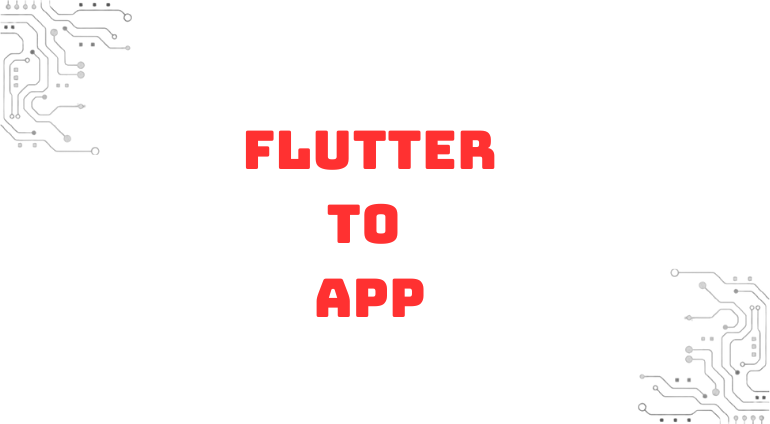
Building a Flutter prototype before initiating the software development process offers several significant benefits:
1. Visualize Ideas Early
Creating a Flutter prototype allows teams to visualize and explore design concepts and functionalities early in the
development process. This helps stakeholders better understand the proposed solution and provides an opportunity to refine
ideas before committing resources to full-scale development.
2. Iterate Quickly
Flutter's rapid development capabilities enable teams to iterate quickly on design and functionality, making it easier
to incorporate feedback and refine the prototype based on user needs and preferences. This iterative approach ensures
that the final product meets user expectations and reduces the risk of costly changes later in the development cycle.
3. Optimize Development Costs
By identifying and addressing design flaws or usability issues early in the prototyping phase, teams can minimize the need
for expensive changes and rework during the software development process. This results in cost savings and helps keep the
project within budget constraints.
4. Accelerate Time-to-Market
Developing a Flutter prototype allows teams to accelerate the time-to-market for the final product by streamlining the
development process. Rapid prototyping enables faster validation of ideas, quicker iterations, and ultimately, a shorter
development cycle, allowing the product to reach market faster and start generating revenue sooner.
5. Enhance Stakeholder Communication
Presenting a Flutter prototype to stakeholders provides a tangible representation of the proposed solution, fostering better communication
and alignment among team members, clients, and other stakeholders. This ensures that everyone involved in the project has a clear
understanding of the product vision and goals, reducing misunderstandings and potential scope creep.
6. Mitigate Risks
Early validation of ideas and user testing in a Flutter prototype helps mitigate risks associated with the development
process. By identifying potential issues and challenges early on, teams can proactively address them, reducing the
likelihood of project delays or failures.
In summary, building a Flutter prototype before starting the software development process offers numerous benefits, including early visualization of ideas, rapid iteration, cost savings, accelerated time-to-market, enhanced stakeholder communication, and risk mitigation. By leveraging Flutter's capabilities for prototyping, teams can increase the likelihood of project success and deliver a high-quality product that meets user needs and expectations.

This is what you gain with your own Flutter prototype:
A: A Flutter prototype offers several key benefits for the development process:
1. Visualize Ideas Early: Creating a Flutter prototype allows developers and stakeholders to visualize and
interact with the app's user interface and functionality early in the development process. This helps validate ideas,
explore design concepts, and ensure alignment with project goals before committing to full-scale development.
2. Iterate Quickly: Flutter's hot reload feature enables rapid iteration, allowing developers to make changes to the
prototype in real-time and instantly see the results. This facilitates quick experimentation, iteration, and refinement of
design elements and features, leading to a more polished and user-friendly final product.
3. Gather Feedback: Presenting a Flutter prototype to stakeholders, clients, or potential users provides an opportunity to
gather valuable feedback and insights. By soliciting feedback early in the development process, teams can identify potential issues,
validate assumptions, and make informed decisions about the direction of the project.
4. Reduce Development Costs: By identifying and addressing design flaws or usability issues early in the prototyping phase,
teams can minimize the need for costly changes and rework during full-scale development. This results in cost savings and helps keep
the project within budget constraints.
5. Accelerate Time-to-Market: Developing a Flutter prototype allows teams to accelerate the time-to-market for the final product
by streamlining the development process. Rapid prototyping enables faster validation of ideas, quicker iterations, and ultimately,
a shorter development cycle, allowing the product to reach market faster and start generating revenue sooner.
6. Enhance Collaboration: When we collaborate on a Flutter prototype, it's like gathering around a virtual table where team
members, stakeholders, and clients can chat and exchange ideas freely. By joining forces to polish the prototype, we make sure
everyone's on the same page about what we're aiming for with the project, which helps us avoid confusion and prevent any unexpected
changes from sneaking in later on.
In summary, a Flutter prototype offers several core benefits, including early visualization of ideas, rapid iteration, gathering feedback, reducing development costs, accelerating time-to-market, and enhancing collaboration. By leveraging Flutter's capabilities for prototyping, teams can increase the likelihood of project success and deliver a high-quality product that meets user needs and expectations.
A: This is how Flutter helps:
1. Quick Visualization: Flutter allows developers to quickly translate software requirements into visual
prototypes. This rapid visualization helps stakeholders better understand the proposed solution and provides an
early opportunity to validate requirements.
2. Accelerated Feedback Loop: By presenting a Flutter prototype to stakeholders, teams can gather feedback on software
requirements in real-time. This rapid feedback loop enables quick iteration and refinement of requirements, leading to a more
accurate and robust project scope.
3. Reduced Misunderstandings: Visualizing software requirements using Flutter helps reduce misunderstandings between
stakeholders and development teams. Clear and tangible prototypes provide a common reference point for discussions,
minimizing ambiguity and ensuring alignment on project objectives.
4. Early Validation of Assumptions: Rapid prototyping with Flutter allows teams to validate assumptions about software
requirements early in the project lifecycle. By testing different design concepts and functionalities, teams can identify
potential issues and make informed decisions about the project direction.
5. Cost and Time Savings: Obtaining rapid software requirements using Flutter can lead to significant cost and time savings.
By identifying and addressing requirements-related issues early, teams can minimize the need for costly changes and rework later
in the development process, ultimately reducing project expenses and accelerating time-to-market.
In summary, obtaining rapid software requirements using Flutter offers benefits such as quick visualization, an accelerated feedback loop, reduced misunderstandings, early validation of assumptions, and cost and time savings. By leveraging Flutter for rapid prototyping, teams can ensure that software requirements are well-defined, validated, and aligned with project goals, setting the stage for a successful development project.
A: Flutter serves to decrease the complexity of software development processes in several ways:
1. Single Codebase: With Flutter, developers can write code once and deploy it on multiple platforms, including iOS,
Android, web, and desktop. This eliminates the need to maintain separate codebases for each platform, reducing complexity
and streamlining the development process.
2. Consistent UI Across Platforms: Flutter provides a rich set of pre-designed widgets and customizable UI components that
look and feel native across different platforms. This ensures a consistent user experience, regardless of the device or platform,
reducing the complexity of designing and implementing platform-specific UI elements.
3. Hot Reload: Flutter's hot reload feature allows developers to instantly see the effects of code changes in the app's
interface without having to restart the app. This accelerates the development process and simplifies debugging, as developers
can quickly iterate on design and functionality.
4. Faster Development: The combination of a single codebase, consistent UI, and hot reload functionality makes
development with Flutter faster and more efficient. Developers can build and iterate on features more quickly, reducing
the overall complexity of the development process.
5. Built-in Tools and Libraries: Flutter comes with a rich set of built-in tools, libraries, and packages that simplify
common development tasks, such as handling UI animations, networking, and state management. This reduces the need for developers
to rely on third-party solutions, further decreasing complexity.
6. Community Support and Resources: Flutter has a large and active community of developers, with extensive
documentation, tutorials, and resources available online. This provides developers with access to a wealth of knowledge
and support, making it easier to overcome challenges and simplify the development process.
Overall, Flutter serves to decrease the complexity of software development processes by providing a unified framework for building cross-platform applications, simplifying UI development, accelerating development with hot reload, offering built-in tools and libraries, and fostering a supportive community of developers.